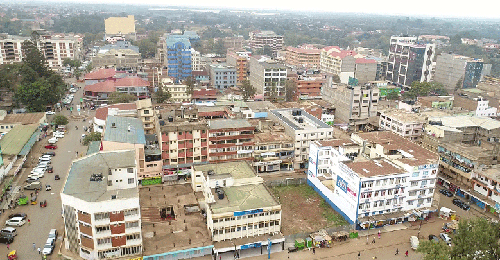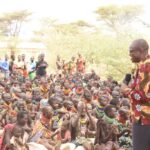Kiambu County, a bustling economic powerhouse just north of Nairobi, is a prime destination for Kenyan business professionals looking to expand their reach. Covering 2,449.2 square kilometers and home to over 1.6 million people, this county blends urban vibrancy with rural richness. With its headquarters in Thika Town, Kiambu’s strategic location in the former Central Province makes it a hotspot for commerce, agriculture, and real estate. For entrepreneurs, investors, and corporate leaders, understanding its administrative structure—12 sub-counties divided into 60 electoral wards—is the first step to tapping into its potential.
In this detailed guide, we’ll walk you through all 60 wards across Kiambu’s constituencies, unpack their economic significance, and spotlight opportunities for 2025. Whether you’re drawn to Thika’s industrial edge or Limuru’s tea estates, Kiambu’s wards offer something for every business mind. Let’s explore what makes this county tick and how you can stake your claim.
Kiambu County: A Business Hub on Nairobi’s Doorstep
Kiambu County’s proximity to Nairobi—just 15 kilometers at its closest point—gives it a unique edge. With a population of 1,623,282 (2019 Kenya Census), it’s the second most populous county in Kenya after Nairobi, boasting a density of 663 people per square kilometer. Governed by Kimani Wamatangi, Kiambu contributes significantly to Kenya’s GDP, with agriculture (tea, coffee, horticulture) and industry driving its KSh 150 billion+ economy (county estimates).
The county’s 12 sub-counties—Gatundu South, Gatundu North, Juja, Thika Town, Ruiru, Githunguri, Kiambu, Kiambaa, Kabete, Kikuyu, Lari, and Limuru—are subdivided into 60 wards, each with an elected MCA shaping local priorities. From urban centers like Ruiru to rural gems like Ngecha Tigoni, Kiambu’s diversity is a goldmine for businesses. Here’s the full list of wards, constituency by constituency.
Full List of Wards in Kiambu County by Constituency
Kiambu’s 60 wards span 12 constituencies, each with its own economic flavor. Below, we detail every ward and highlight what it brings to the table.
Gatundu South Constituency
Population: 121,803. Known for tea and coffee, with growing trade hubs.
- Kiamwangi Ward
- Profile: Rural, tea and coffee farming base.
- Business Edge: Agro-processing or farm input supply.
- Kiganjo Ward
- Profile: Agricultural with small markets.
- Business Edge: Retail or microfinance for farmers.
- Ndarugu Ward
- Profile: Farming with residential growth.
- Business Edge: Real estate or consumer goods.
- Ngenda Ward
- Profile: Mix of agriculture and trade near Gatundu town.
- Business Edge: Logistics or rural retail.
Gatundu North Constituency
Population: 109,261. A quieter, rural area with tea and dairy focus.
- Gituamba Ward
- Profile: Tea and subsistence farming.
- Business Edge: Tea value addition or farm tech.
- Githobokoni Ward
- Profile: Rural with agricultural roots.
- Business Edge: Solar energy or farm supplies.
- Chania Ward
- Profile: Farming with small trade centers.
- Business Edge: Transport or retail expansion.
- Mangu Ward
- Profile: Agricultural with community markets.
- Business Edge: Micro-enterprise support or dairy ventures.
Juja Constituency
Population: 152,671. A mix of urban and industrial zones near Thika.
- Murera Ward
- Profile: Residential with industrial spillover.
- Business Edge: Housing or B2B services.
- Theta Ward
- Profile: Rural with tea and coffee.
- Business Edge: Agro-processing or farm inputs.
- Juja Ward
- Profile: Urbanizing with trade and housing.
- Business Edge: Retail or real estate development.
- Witeithie Ward
- Profile: Growing residential area near Juja town.
- Business Edge: Consumer goods or rental properties.
- Kalimoni Ward
- Profile: Mix of farming and urban growth.
- Business Edge: Logistics or service outlets.
Thika Town Constituency
Population: 165,714. Industrial and commercial hub centered on Thika.
- Township Ward
- Profile: Thika’s urban core with factories and shops.
- Business Edge: Industrial supply or retail franchises.
- Kamenu Ward
- Profile: Residential with industrial proximity.
- Business Edge: Housing or worker-focused services.
- Hospital Ward
- Profile: Urban with healthcare and trade.
- Business Edge: Medical supplies or retail.
- Gatuanyaga Ward
- Profile: Farming with urban edges.
- Business Edge: Horticulture trade or logistics.
- Ngoliba Ward
- Profile: Rural with agricultural base.
- Business Edge: Farm inputs or processing units.
Ruiru Constituency
Population: 371,111. Kiambu’s most populous, with urban and industrial growth.
- Gitothua Ward
- Profile: Residential with trade near Ruiru town.
- Business Edge: Retail or real estate.
- Biashara Ward
- Profile: Commercial hub of Ruiru.
- Business Edge: B2B services or tech startups.
- Gatongora Ward
- Profile: Urbanizing with housing boom.
- Business Edge: Construction or rental properties.
- Kahawa Wendani Ward
- Profile: Residential near Nairobi border.
- Business Edge: Consumer goods or commuter services.
- Kiuu Ward
- Profile: Mix of farming and urban sprawl.
- Business Edge: Logistics or retail expansion.
- Mwiki Ward
- Profile: Dense residential area.
- Business Edge: Housing or FMCG distribution.
- Mwihoko Ward
- Profile: Urban with growing trade.
- Business Edge: Retail outlets or digital services.
Githunguri Constituency
Population: 165,208. Tea and dairy stronghold with rural charm.
- Githunguri Ward
- Profile: Central ward with tea and trade.
- Business Edge: Dairy processing or retail.
- Githiga Ward
- Profile: Rural with farming focus.
- Business Edge: Farm supplies or solar solutions.
- Ikinu Ward
- Profile: Agricultural with small markets.
- Business Edge: Microfinance or consumer goods.
- Ngewa Ward
- Profile: Farming with residential pockets.
- Business Edge: Real estate or rural retail.
- Komothai Ward
- Profile: Tea and dairy rural hub.
- Business Edge: Agro-processing or farm tech.
Kiambu Constituency
Population: 115,693. Urban-rural mix near Kiambu town.
- Ting’ang’a Ward
- Profile: Farming with urban edges.
- Business Edge: Horticulture trade or logistics.
- Ndumberi Ward
- Profile: Agricultural with trade growth.
- Business Edge: Retail or farm inputs.
- Riabai Ward
- Profile: Rural with tea and coffee.
- Business Edge: Tea processing or cooperatives.
- Township Ward
- Profile: Kiambu town’s commercial core.
- Business Edge: Retail or professional services.
Kiambaa Constituency
Population: 145,053. Urbanizing with tea and residential growth.
- Cianda Ward
- Profile: Farming with urban sprawl.
- Business Edge: Real estate or consumer goods.
- Karuri Ward
- Profile: Residential with trade hubs.
- Business Edge: Retail or housing projects.
- Ndenderu Ward
- Profile: Urbanizing near Banana.
- Business Edge: Construction or service outlets.
- Muchatha Ward
- Profile: Dense residential area.
- Business Edge: Rental properties or FMCG.
- Kihara Ward
- Profile: Mix of farming and urban growth.
- Business Edge: Logistics or retail expansion.
Kabete Constituency
Population: 140,427. Urban with rural fringes near Nairobi.
- Gitaru Ward
- Profile: Residential with trade.
- Business Edge: Retail or housing.
- Muguga Ward
- Profile: Farming with urban edges.
- Business Edge: Horticulture or real estate.
- Nyathuna Ward
- Profile: Rural with tea and dairy.
- Business Edge: Dairy processing or farm inputs.
- Kabete Ward
- Profile: Urbanizing with trade.
- Business Edge: B2B services or retail.
- Uthiru Ward
- Profile: Dense residential near Nairobi.
- Business Edge: Consumer goods or commuter services.
Kikuyu Constituency
Population: 187,108. Urban-rural blend with strong trade links.
- Karai Ward
- Profile: Farming with trade growth.
- Business Edge: Logistics or retail.
- Nachu Ward
- Profile: Rural with agricultural base.
- Business Edge: Farm supplies or agro-processing.
- Sigona Ward
- Profile: Urbanizing with residential boom.
- Business Edge: Real estate or consumer goods.
- Kikuyu Ward
- Profile: Central ward with trade and housing.
- Business Edge: Retail or professional services.
- Kinoo Ward
- Profile: Dense residential near Nairobi.
- Business Edge: Housing or FMCG distribution.
Lari Constituency
Population: 135,189. Rural with tea and scenic appeal.
- Kijabe Ward
- Profile: Tea farming with tourism potential.
- Business Edge: Eco-tourism or tea processing.
- Nyanduma Ward
- Profile: Rural with agricultural focus.
- Business Edge: Farm inputs or rural retail.
- Kamburu Ward
- Profile: Farming with small markets.
- Business Edge: Microfinance or transport.
- Lari/Kirenga Ward
- Profile: Tea and dairy rural hub.
- Business Edge: Dairy ventures or farm tech.
Limuru Constituency
Population: 159,314. Tea estates and urban growth define Limuru.
- Bibirioni Ward
- Profile: Rural with tea production.
- Business Edge: Tea processing or farm supplies.
- Limuru Central Ward
- Profile: Urban center of Limuru town.
- Business Edge: Retail or B2B services.
- Ndeiya Ward
- Profile: Rural with farming base.
- Business Edge: Agro-processing or solar solutions.
- Limuru East Ward
- Profile: Mix of tea and urban growth.
- Business Edge: Logistics or consumer goods.
- Ngecha Tigoni Ward
- Profile: Tea estates with scenic appeal.
- Business Edge: Tourism or tea value addition.
Economic Drivers of Kiambu’s Wards
Kiambu’s wards fuel a robust economy, with agriculture contributing 40% and industry 30% (county data). Tea exports from Limuru and Gatundu South exceed 30 million kg annually, while Thika’s industrial zone employs over 50,000. Ruiru and Kikuyu’s residential boom drives real estate, with property values up 12% yearly. The county’s 1.2 million registered voters (IEBC 2022) reflect a thriving consumer market.
Key economic stats:
- Tea Output: 35 million kg annually, per Kenya Tea Development Agency.
- Industrial Growth: Thika hosts 500+ factories, producing KSh 20 billion in goods.
- Population Boom: 663 people per km², fueling demand for housing and services.
Business Opportunities in Kiambu’s Wards
Kiambu’s wards offer diverse prospects for 2025. Here’s how to dive in:
Agribusiness and Processing
- Target Wards: Ngecha Tigoni, Kiamwangi, Ngoliba, Nyathuna.
- Opportunities: Tea or horticulture processing; farm input supply.
- Why: Tea and coffee demand exceeds local processing by 15%.
Retail and Consumer Markets
- Target Wards: Township (Thika), Biashara, Kikuyu, Muchatha.
- Opportunities: Retail stores, FMCG, or tech products.
- Why: Urban wards see 10% annual consumer growth.
Logistics and Transport
- Target Wards: Gatuanyaga, Gatongora, Kiuu, Ting’ang’a.
- Opportunities: Last-mile delivery or cold storage.
- Why: Rural-urban links need efficient transport solutions.
Real Estate and Housing
- Target Wards: Mwihoko, Kinoo, Ndenderu, Sigona.
- Opportunities: Residential projects or rental units.
- Why: Property demand up 12% yearly near Nairobi.
Challenges and Fresh Insights
Kiambu faces hurdles that smart businesses can tackle:
- Infrastructure Strain: Urban wards like Mwiki need better roads—logistics firms can step up.
- Digital Gaps: Rural Ndeiya lags in connectivity—tech solutions can bridge this.
- Water Access: Tea wards like Bibirioni face shortages—water tech is a niche.
Insight: Kiambu’s urban-rural synergy is untapped. Pair Thika’s industrial output with Limuru’s tea for a supply chain win, or leverage JKUAT in Juja (2,000+ graduates yearly) for tech talent.
How to Engage with Kiambu’s Wards
Here’s your playbook:
- Target Smart: Match your business—tea in Limuru, retail in Ruiru—to ward strengths.
- Visit Locally: Connect with MCAs in Thika or Githunguri for insights.
- Use County Plans: The KSh 12 billion 2024/2025 budget boosts agriculture—align with it.
- Partner Up: Link with Saccos or trader groups for market entry.
- Go Digital: M-Pesa rules even in rural wards—offer online solutions.





